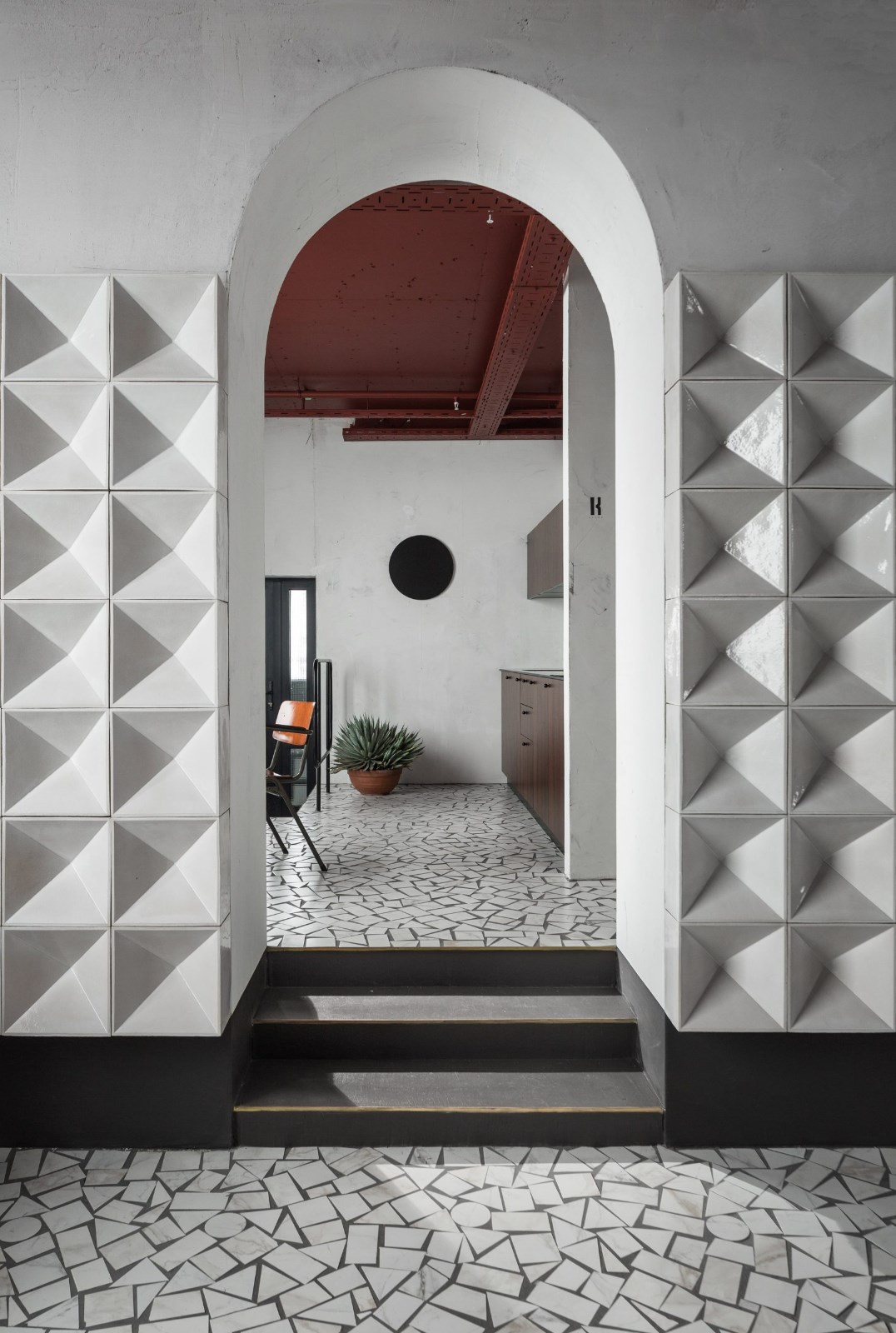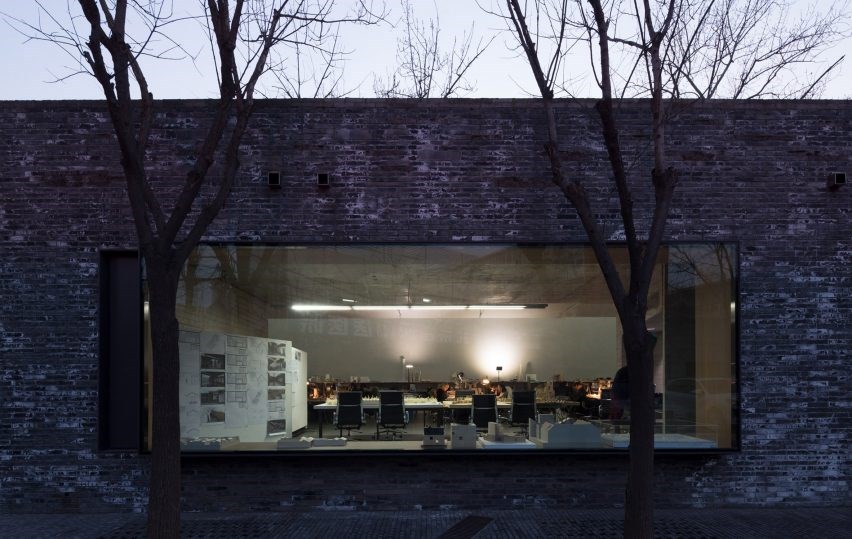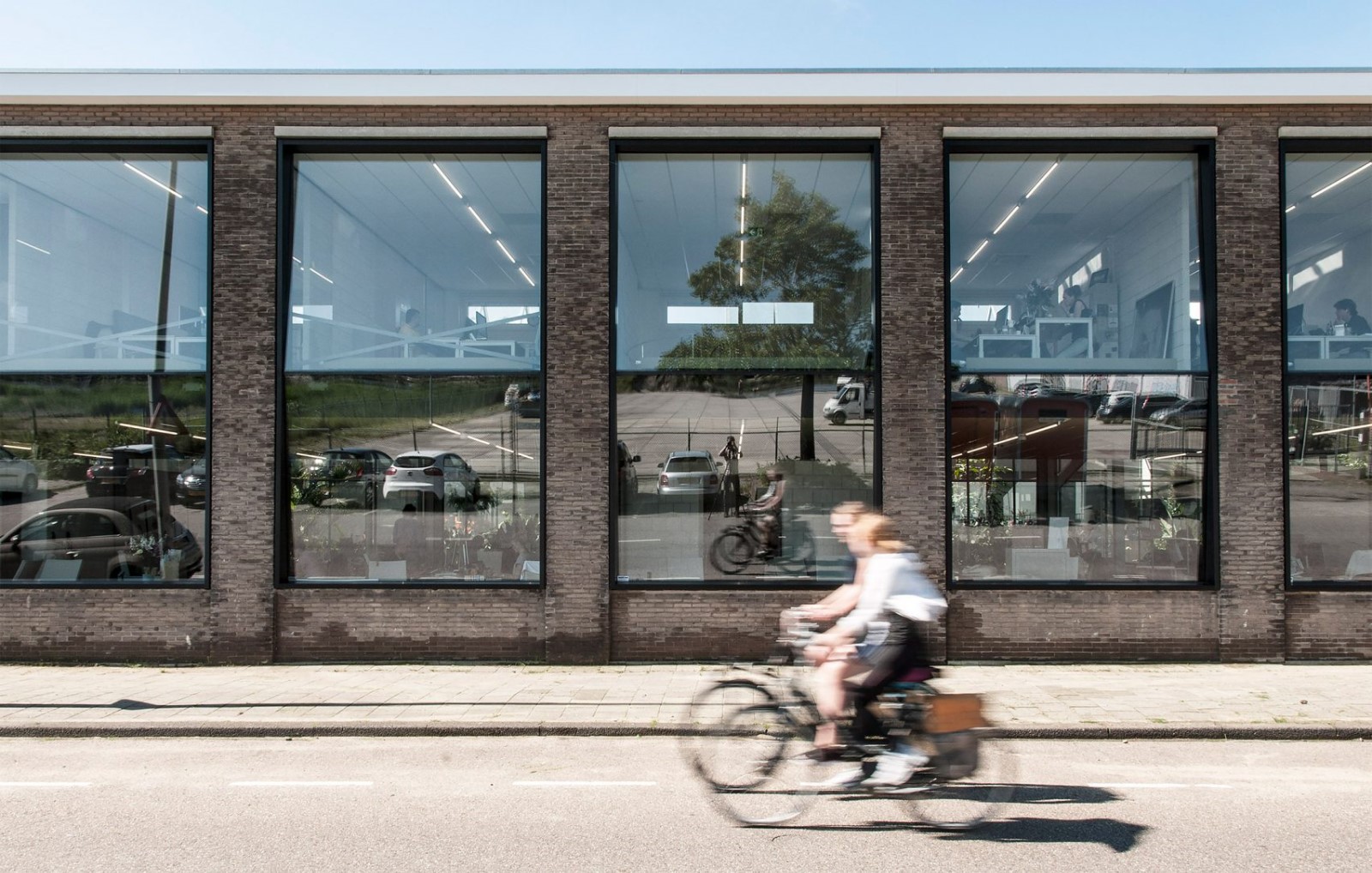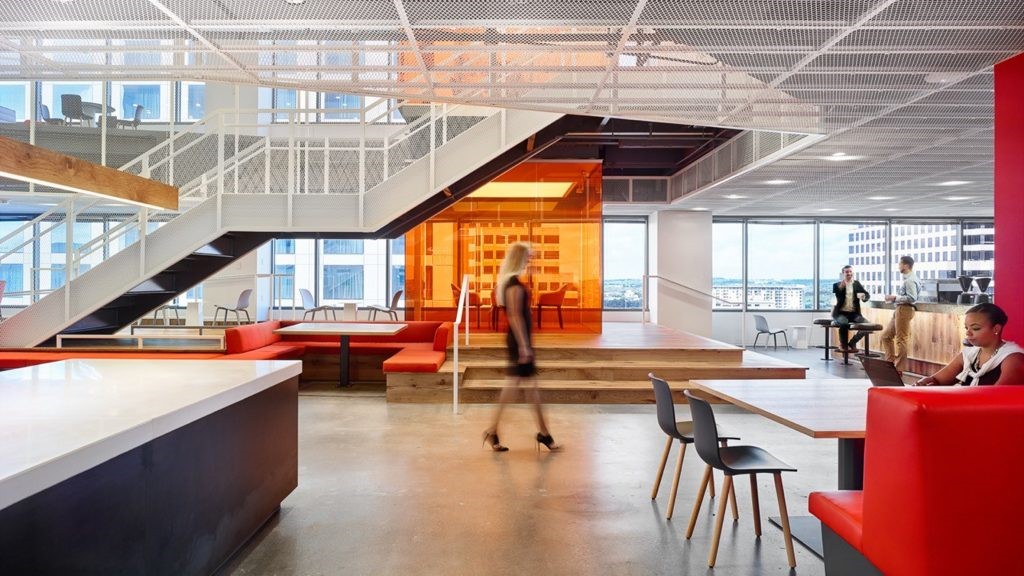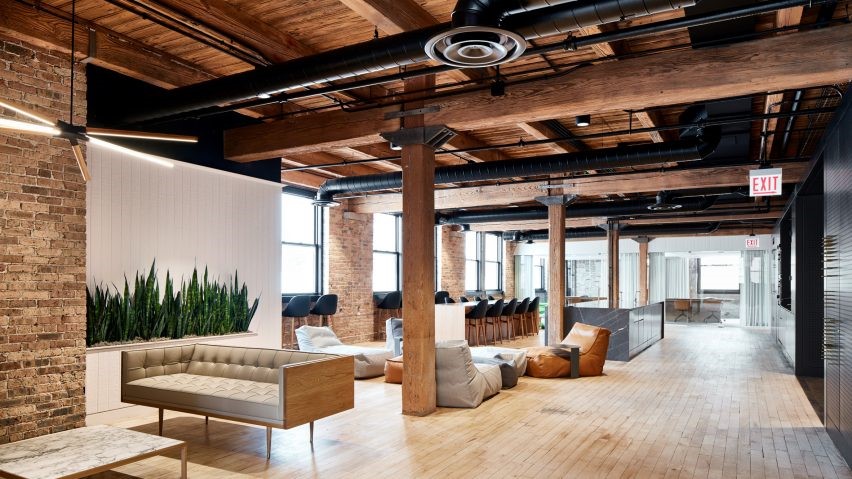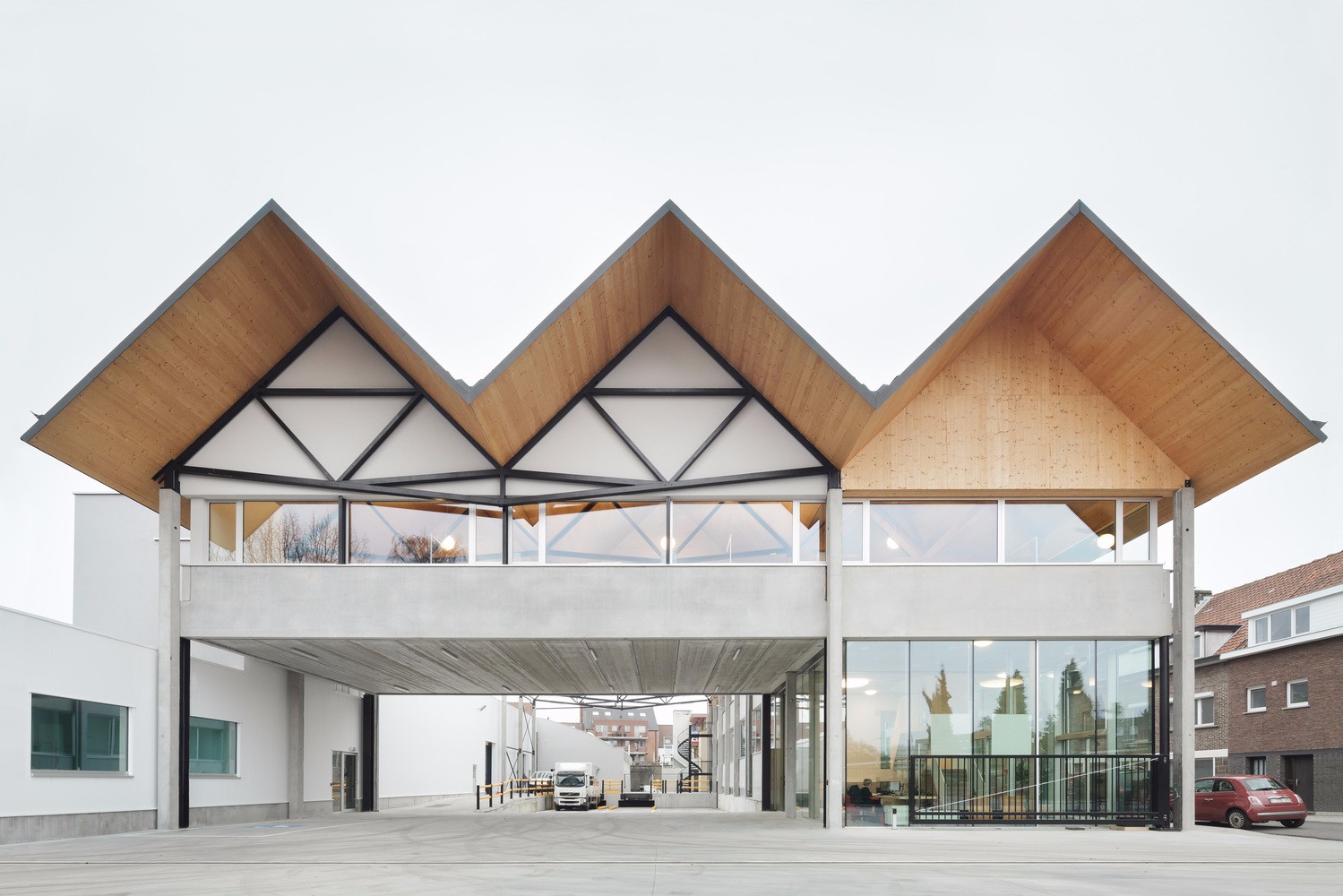Universidade Anhembi Morumbi São José dos Campos Campus KAAN Architecten + URBsp Arquitetura
2018-07-10 15:00
© Fran Parente
(Fran Parente)


架构师提供的文本描述。这两座建筑都受到相同的设计选择的驱动:通过对具有代表性的立面采取非尺度的方法,为安亨比莫伦比大学校园创造一个优雅而又强大的建筑特色,为学生和机构提供一个丰富的中央公共空间,促进社会互动,并通过允许更多的自然空气流通来应对这些地区炎热的巴西气候。
Text description provided by the architects. Both buildings have been driven by the same design choices: to create an elegant yet strong architectural identity for the campuses of the Universidade Anhembi Morumbi through a non-scale approach to the representative façades, providing the students and the institution with a generous central common space that promotes social interaction and responds to the hot Brazilian climate of these regions by allowing greater circulation of natural air..
© Fran Parente
(Fran Parente)


圣何塞·多斯·坎波斯(S o Josédos Campos)的未来校园坐落在一个主干道交叉口附近,就像一处高架地块上的现代卫城,这创造了与世隔绝和理想的条件,让它在密集的城市结构中成为一个新的参照点。通过优化其地区的地形特征和由于平衡的立面几何,该项目是地标,坚定和直观地向城市开放,使大学在建筑全景中有一个可识别的位置。
Located in proximity to a main road junction, the future campus in São José dos Campos stands like a modern day Acropolis on an elevated plot, which creates isolation and the ideal conditions to turn it into a new reference point amid the dense urban fabric. By optimizing the topographical characteristics of their areas and thanks to the balanced façade geometries, the project is landmarks that firmly and visually open themselves to the city, giving the University a recognizable position within the architectural panorama.
© Fran Parente
(Fran Parente)


该建筑结构紧凑,由三层楼组成,总面积5.300平方米,分为南北两翼,中间有一个大的中庭;
The buildig has a compact structure and consists of three floors with a total area of 5.300 sqm, which are organized in two wings, north and south separated by a large central atrium;
Ground floor plan


巴西强烈的太阳辐射被一个完全包罗万象的垂直板系统所缓解,它满足了每个立面遮阳的需要。选择一个固定的结构体系,使Kaan建筑能够在薄混凝土板和屋顶梁之间安装玻璃。在圣何塞·多斯·坎波斯的案例中,这是依靠当地劳动力的专门知识就地成型的,
The intense Brazilian solar radiation is mitigated by a fully encompassing system of vertical slabs that fulfills the need for shade in every façade. Choosing a regular structural system enabled KAAN Architecten to feature glass in between the thin concrete slabs and the roof beams. In the case of São José dos Campos, this was molded in-situ, relying on the expertise of the local workforce,
© Fran Parente
(Fran Parente)


外墙玻璃的广泛使用提高了透明度,并显示出与城市建筑的深刻联系。此外,焦糖树脂地板舒适地反映了丰富的自然光在社会核心和通道的建筑物。自然通风和光线是通过天花板优化在混凝土和较小的木制元素作为太阳叶片。
The wide use of glass in the façades enhances transparency and reveals a deep connection with the architecture of the cities. Moreover, a caramel resin floor comfortably reflects the abundant natural light in the social core and passageways of the buildings. The natural ventilation and light are optimized via a ceiling pergola in concrete and smaller wooden elements acting as sun blades.
© Fran Parente
(Fran Parente)


共享项目包括教室、不同的练习和模拟实验室、自助餐厅、理疗设施、图书馆和办公室。所有的教育空间都位于纵向玻璃幕墙旁,以利用自然光,并面向大规模的中心空间,以体现建筑的核心社会身份及其作为相遇、人与人之间联系和知识交流的场所的本质。
The shared program features classrooms, diverse laboratories for practice exercises and simulation, a space for the cafeteria, physiotherapy facilities, a library and offices. All educational spaces are situated alongside the longitudinal glazed façades to take advantage of the natural light and have been oriented towards the large-scale central void, to embody the buildings’ core social identity and its essence as a place for encounters, human connection and knowledge exchange.
© Fran Parente
(Fran Parente)


在仔细分析了结构机会之后,在圣何塞·多斯·坎波斯大楼采用了一套由现浇混凝土制成的带肋板系统。在Piracicaba中,采用了一个肺泡板系统,探索预制混凝土的最佳可能性。这些选择允许宽的自由跨度和基于严格的1.50x1.50米网格的显着的空间模块化。此外,对太阳辐射的深入研究产生了巨大的从地板到天花板的窗户,为教室和实验室提供充足的日光,利用垂直的混凝土元素产生的深阴影。
Following a careful analysis of the structural opportunities, a system of ribbed slabs made possible by in-situ molded concrete was adopted in the São José dos Campos building. In Piracicaba instead a system of alveolar slabs was employed, exploring the best possibilities of precast concrete. These choices allow wide free spans and a significant modularity of space based on a rigid 1.50 x 1.50 meter grid. Moreover, the in-depth study into solar radiation results in large floor-to-ceiling windows, which grant abundant daylight to classrooms and laboratories, playing with the deep shadows generated by the vertical concrete elements.
© Fran Parente
(Fran Parente)


Second floor plan
二层平面图


可持续性在这两个校区的设计中起着核心作用,这两个校区采用创新的热控制能源管理系统,以防止制冷浪费,提高屋顶系统的效率和烟囱效应。BIM软件和技术的使用也是这两个项目的核心:每个立面都是根据特定的舒适性研究设计的,为南北高地提供了广阔的保护门廊,并在东西方高地形成了一个密集的垂直砖太阳网。
Sustainability plays a central role in the design of the two campuses, which feature an innovative energy management system for thermal control to prevent refrigeration waste and enhance the efficiency of the roof system with chimney effect. The use of BIM software and technology is also at the core of both projects: each façade has been designed following specific comfort studies, resulting in a wide protection porch for the north and south elevations, and in a dense grid of vertical brise-soleil for the east and west elevations
© Fran Parente
(Fran Parente)






















































Architect KAAN Architecten, URBsp Arquitetura
Location Av. Dep. Benedito Matarazzo, 9009 - Jardim Oswaldo Cruz, São José dos Campos - SP, 12216-550, Brazil
Authors Kees Kaan, Vincent Panhuysen, Dikkie Scipio, Renata Gilio
Team Marco (Peixe) D'Elia, Paolo Faleschini, Cristina Gonzalo Cuairán, Mariana Mariano, Ricardo Marmorato, Laís Oliveira Xavier
Area 0.0 m2
Project Year 2017
Photographs Fran Parente
Category University
Manufacturers Loading...


















